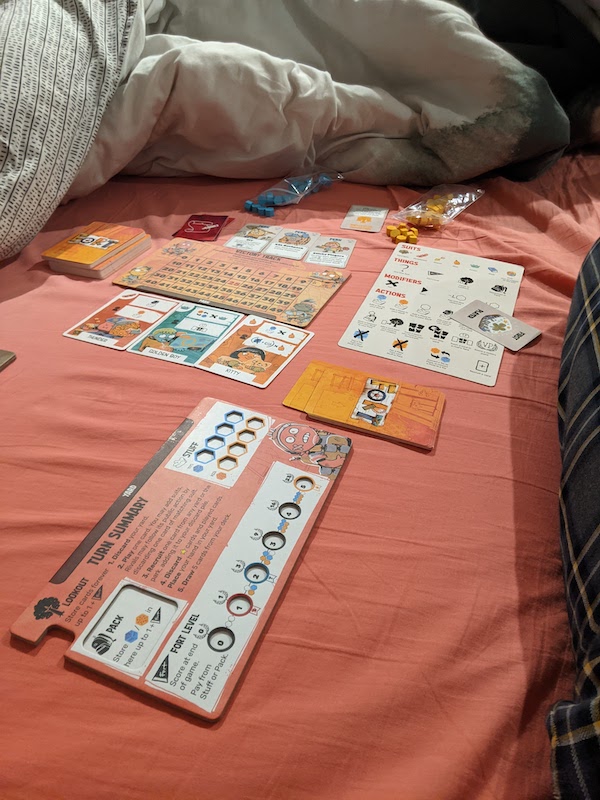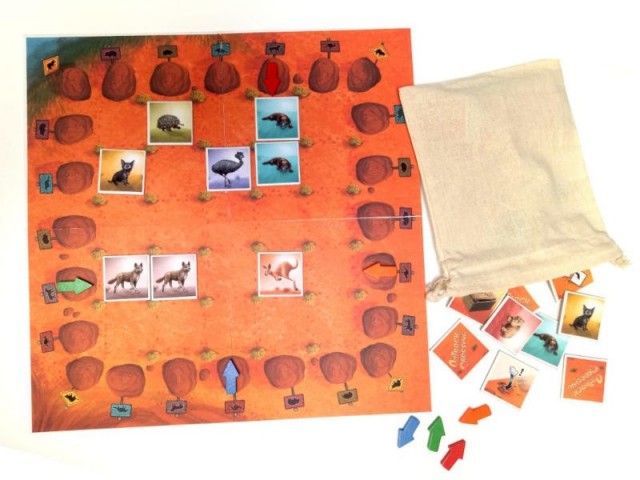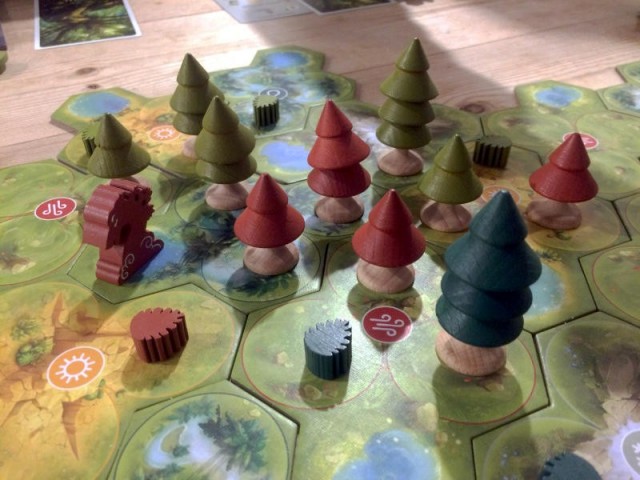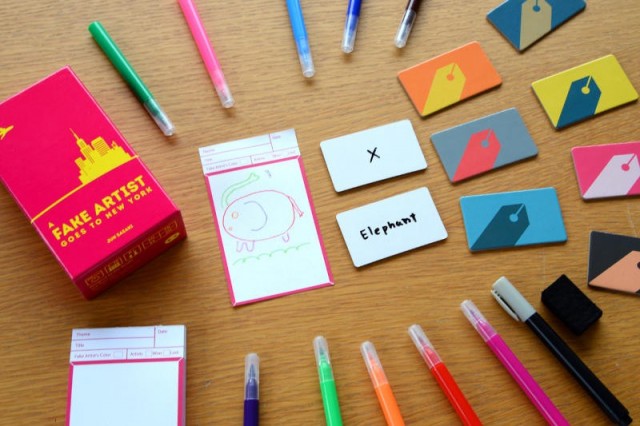It's time to call the kids in from the park.
Let's play together
Fort tries to capture the nostalgic feeling of childhood. Of pizza parties, and no inhibitions. Where you could go to the park and ask kids to come back to your place and not have the cops called. Where you would meet all sorts of wonderful children like Doodles, who's defining trait is his Garfield drawing, or Flipper who earned the nickname because he's the only kid on the playground with a coin.
There's been a lot of effort put into this theme, with fully fledged characters for you to enjoy. Despite this, the theme isn't fully realised. Through no fault of the production team. The mechanics of the game don't match up to the theme 1 to 1.
This is understandable because Fort is a re-imagining of an older game, SPQF, which had your more traditional board game theme. It's also a criticism I can only levy at Fort because the theme they chose was so inspired and they went so hard in trying to incorporate it.
But it's gameplay ends up being too mechanical for its own good.
So while there are times in Fort where you'll fall into the theme of the game and try to be the coolest kid on the block. There are also times where you sit back and go I want Dot for the sole reason she gives me the most victory points.

Mechanically speaking
If you put the amazing theme aside, you're still left with an excellent deck-builder.
Well, maybe deck-builder isn't the right word.
While you're going through familiar motions of drawing, playing, recruiting, and discarding. There's notable differences which make Fort stand alone.
A simple example is on your turn you're only able to play one card. This is a large departure from the genre that created 30 minute Dominion turns, where someone would run through their whole deck before their turn was finished.
But this isn't so simple, as a lot of cards can be empowered. Like if I play a shovel card, it may give me the option to empower it with other shovels cards in my hand. It's important to note that the action card, and all the other cards used to empower it are put straight into your discard pile.
All other leftover cards in your hand are placed in your yard, where other players can get their hairy hands on them during their recruiting phase.
This is a neat twist on deck-building and adds a lot to the decision making during the game. There will always be some cards you don't want to lose, but the only way to guarantee you won't lose them is to use them. And you might not be in the best position to do that.
So, do you take the risk and send the card to the yard? Or do you play it safe and use it sub-optimally?

Follow the leader
There's also the Follow mechanic, which works a treat in games like Race for the Galaxy, and Glass Road. But also works really well in Fort.
Whenever someone plays a card, you do a circle around the table and every person gets the opportunity to discard a card from their hand of the matching suit. If they do so, they get to use a weaker version of the card. This discarded card goes straight to their discard pile and avoids going to the yard on that player's next turn.
This is a neat way to keep everyone attentive to what is being played. As missed opportunities will cost you an arm and a leg. Or at least a whole butt load of pizza.
It also adds a dimension of figuring out what cards are most likely to appear, and maybe putting one or two of that suit in your deck. Because this is free real estate, and if you're not profiting from it, someone else will!

Let's talk strats
There's a lot of ways to win in Fort but I'm going to boil it down into two major themes: racing to build your fort before everyone else does, or generating an engine to score as many points as possible. In both situations you're racing to get your strategy online faster than Munch can devour a chocolate bar.
However, since everyone is losing cards faster than a typical deck-builder, you're never able to generate a deck allowing you the freedom to pursue your strategy. Instead, you're constantly having to make decisions that are best for that turn, but also are inline with your end goal.
Which brings us back to the question: Do you take the risk and send the card to the yard? Or do you play it safe and use it sub-optimally?
For me, the answer to this question is based on player count. While I was somewhat comfortable putting important cards into the yard when playing with my wife. This came back to bite me when I tried the same strategy in a 3 player game. Where I lost two important scoring cards, and almost cost me the game.
Sometimes this is a blessing in disguise. One of the interesting things about Fort is how it let's you change your strategy on a dime. You rarely have a massive deck of cards to work through, and there's plenty of options for removing, or gaining cards in bulk. This agility allows you to constantly change to the situation you find yourself in, which is again at ends with a traditional deck-builder like Dominion where you can struggle to deviate from your original plan.

Is Fort a Macaroni Sculpture?
As a whole, I really enjoyed Fort.
I've reviewed a lot of card games recently (see Red Rising, London Second Edition), and while there has been some great games. Fort is a cut above. I'm so glad for this re-implementation because otherwise I'd never have had the chance to play such a fantastic game. The interactivity between players is something I haven't seen in deck builders before, and it works so well here.
It also works better at a higher count, as I found adding another pair of thieving hands upped the uncertainty of whether your cards are coming back to you, as well as having access to more yards, gave the game more excitement. It was also more likely you'll be able to follow someone's turn.
Finally, as with Root, and Oath, the artwork by Kyle Ferrin is again superb. Which, even though I couldn't fully connect to the theme, I still enjoyed the production regardless.

Thanks for reading. Visit Roll to Review, where I'm ranking all games I review.
 Games
Games How to resolve AdBlock issue?
How to resolve AdBlock issue? 

















